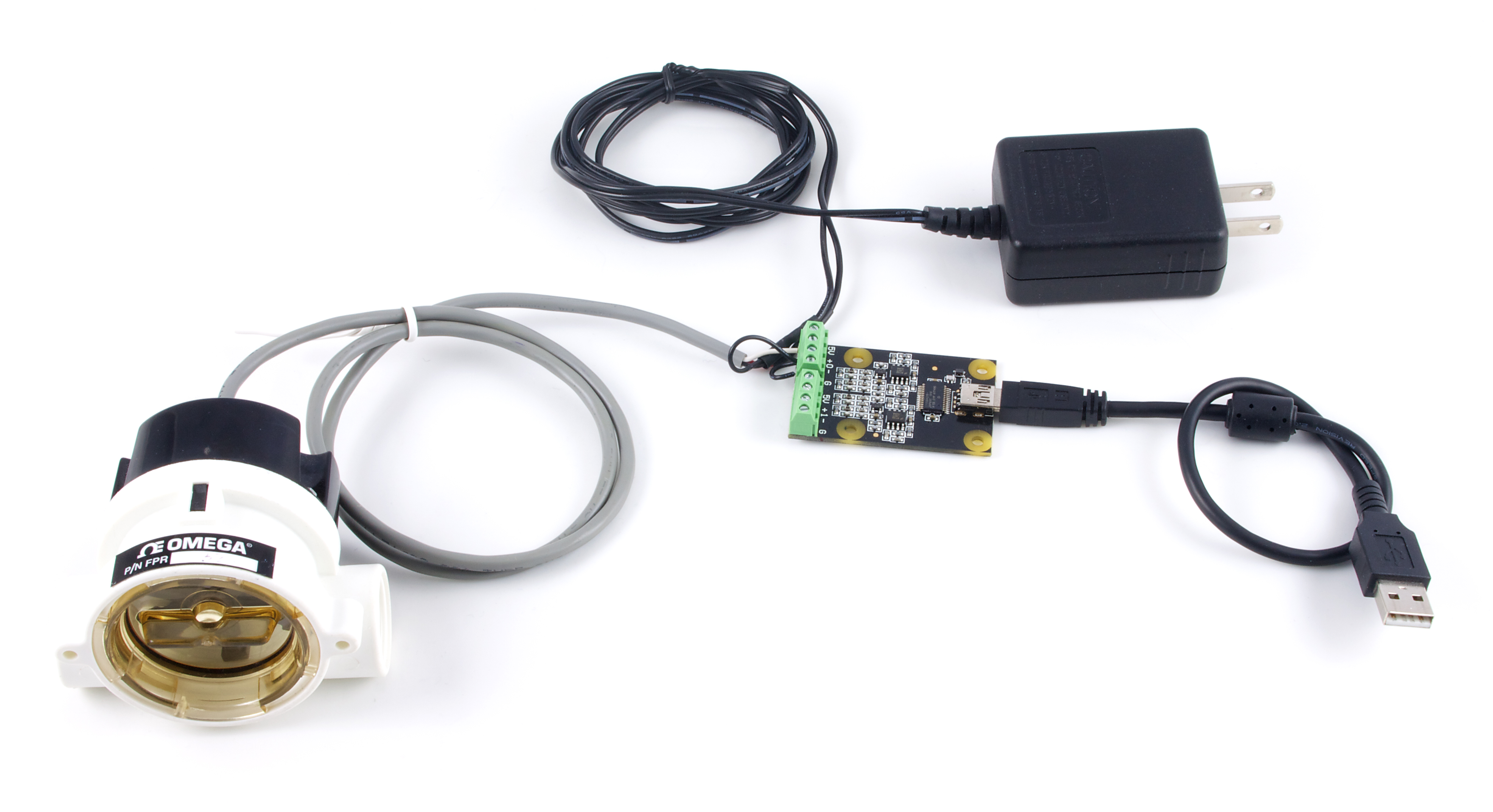Specialized Sensor Series #1 – Flow Sensors
A series of three articles looking at flow sensors, water quality sensors, and RFID.
by Mike

Introduction
At Phidgets, we try to make a wide variety of sensors available to our customers. If we can’t make the sensor ourselves, we try to find a manufacturer so we can sell a third-party sensor to fill the gap. The purpose of this series of blog posts is to highlight a specific class of unique sensors and walk through what options are out there and which ones will work with your Phidgets devices.
In this post, we’ll have a look at flow sensors, which are used to measure the flow rate of a fluid through a pipe or tube.
Turbine Flow Sensors
Turbine flow sensors are the simplest flow sensor available on the market. They consist of a small segment of pipe with a turbine or paddle wheel inside. There’s typically a small magnet on one or more arms of the turbine, and a hall effect sensor on the outside of the pipe outputs a pulse every time the magnet passes by. From the frequency of the pulses, you can determine the flow rate.
Features
- Frequency Output
- Typical Range: 1-30 litres per minute
- Must be installed in-line with the pipe
- Not ideal for sustained high flow due to mechanical wear
- Price Range: $5 – $30 USD
Compatibility with Phidgets
As long as the signal line of the flow sensor is 24V or less, and the pulse frequency is less than 1 MHz, the Versatile Input Phidget should be able to interface the sensor. . Depending on if the sensor is line drive or open collector, you may also need an external pull-up or pull-down resistor. In this post, I'll connect an Omega FPR122 flow sensor to the FrequencyCounter.
This sensor requires a 12V supply, so I'll configure the Versatile Input Phidget to 12V mode. Now, when the wheel in the flow sensor starts turning, an event will fire in the Phidgets API and we can get the current frequency. In the data sheet for my sensor, the frequency range is 15-225 Hz, and the flow range is matched linearly to 0.5 to 5 gallons per minute (GPM). From this information, I can generate the following formula:
`"Flow Rate (GPM) = 3 / 140 f + 5 / 28`This formula can be put in my code, so I can display the flow rate of the sensor in GPM or another unit of my choice.
Industrial Flow Sensors
Because so many industries depend on various fluids flowing through pipes, there are a ton of different technologies being used, all for very different situations. Because they are designed for heavy industry, they also tend to be much more expensive than the little turbine sensors. Below are just a few common types of industrial flow sensors.
Ultrasonic
An ultrasonic flow sensor reflects sounds waves off of impurities or turbulence in the fluid and uses either the doppler effect or a time measurement to detect flow speed. Since they are attached to the outside of a pipe, they are often used for diagnostics in systems where putting a sensor in-line with the pipe is not desirable.
Thermal
A thermal flow sensor consists of a heating element and a temperature sensor. By measuring the fluid temperature near the heating element, the flow speed can be calculated from the known properties of the fluid. They are commonly used to measure the flow of industrial gases, particularly in systems where the gas is pure enough that the properties are precisely known.
Magnetic
Magnetic flow sensors generate a magnetic field and use electrodes to measure the voltage generated from the conductive fluid moving through the field. Like ultrasonic sensors, this method is non-invasive, but in this case requires the fluid to be electrically conductive in order to work.
Compatibility with Phidgets
Industrial sensors typically come in two parts, the sensors (pictured) and a meter designed specifically to read that type of flow sensor. In general, these types of sensors are not compatible with Phidgets. You may find a flow meter that has a 4-20 mA output; in this case, you can use the Phidgets 4-20 mA adapter to connect it to a Phidget InterfaceKit. Most non-professional applications will have a hard time justifying the industrial price tag unless a non-intrusive solution is absolutely necessary.
The Bottom Line
When it comes down to it, the option that makes the most sense with Phidgets is a simple turbine or wheel-based flow sensor with frequency output. You could even plausibly make your own out of a small wheel and an encoder, if you have the ability to calibrate it. If you absolutely need to use an industrial sensor and can afford the price jump, then you’ll need some intermediate step to get the sensor talking to your Phidget; either a meter with a 0-5V or 4-20mA output, or some other adapter will be necessary.
Interested in more? Read the next part in this series on water quality sensors.
